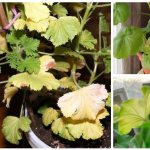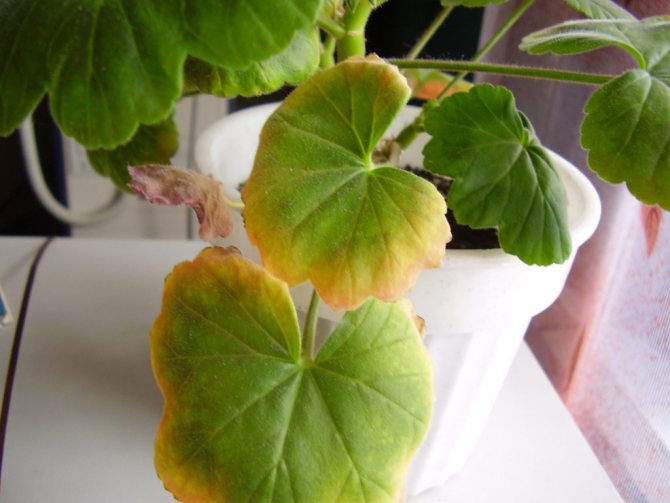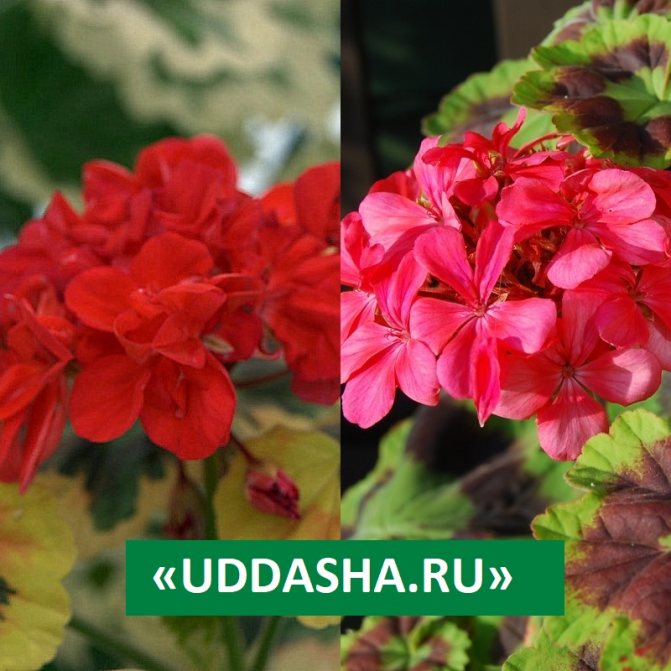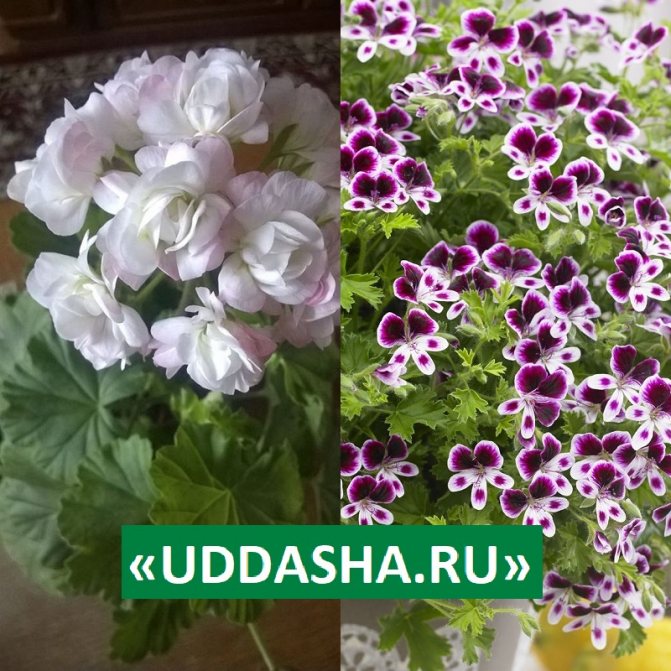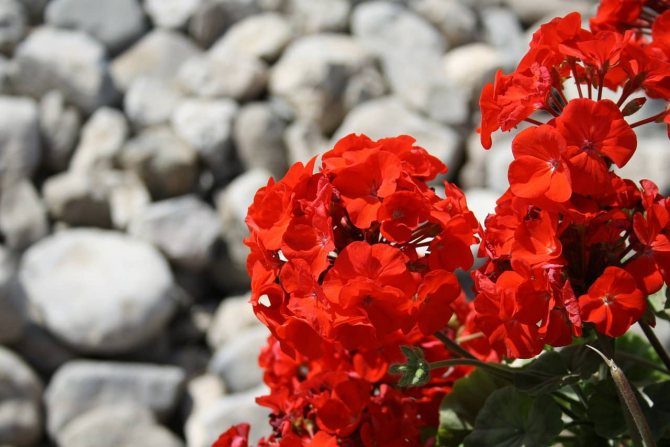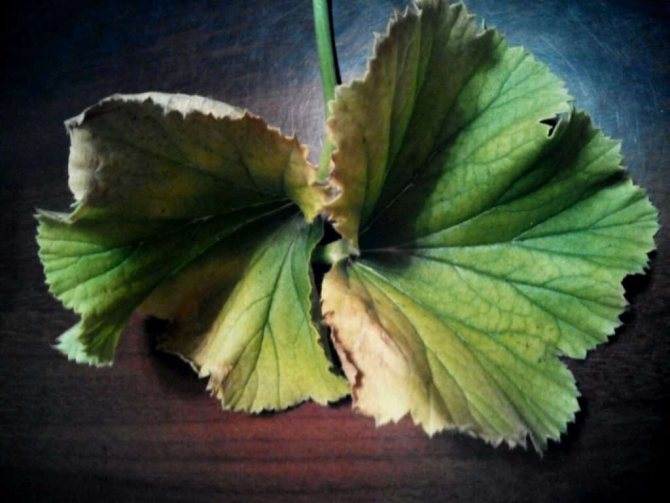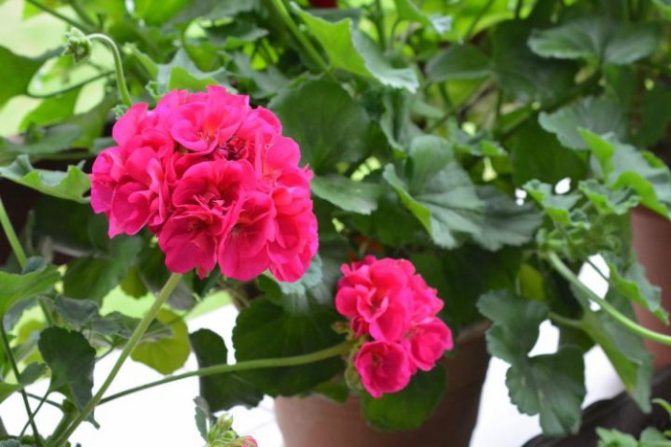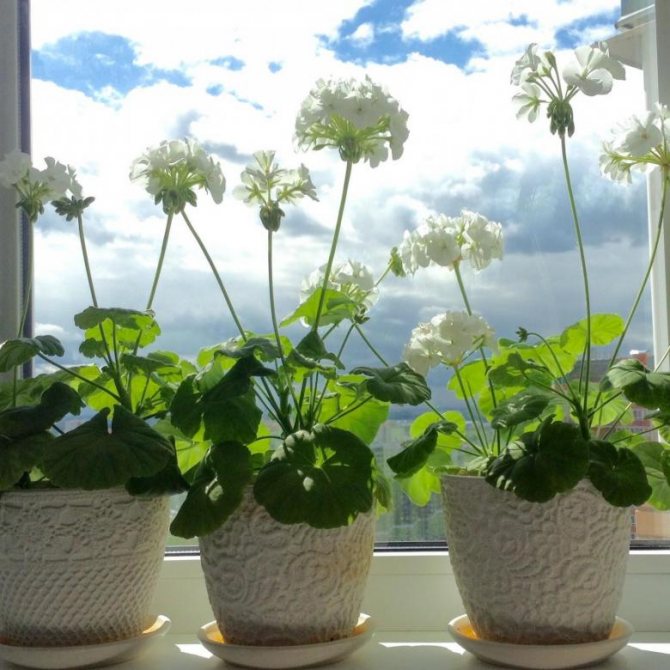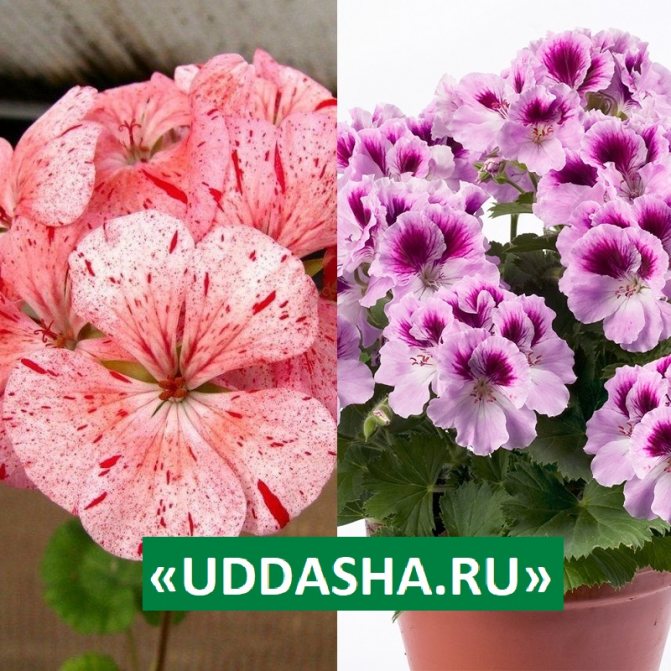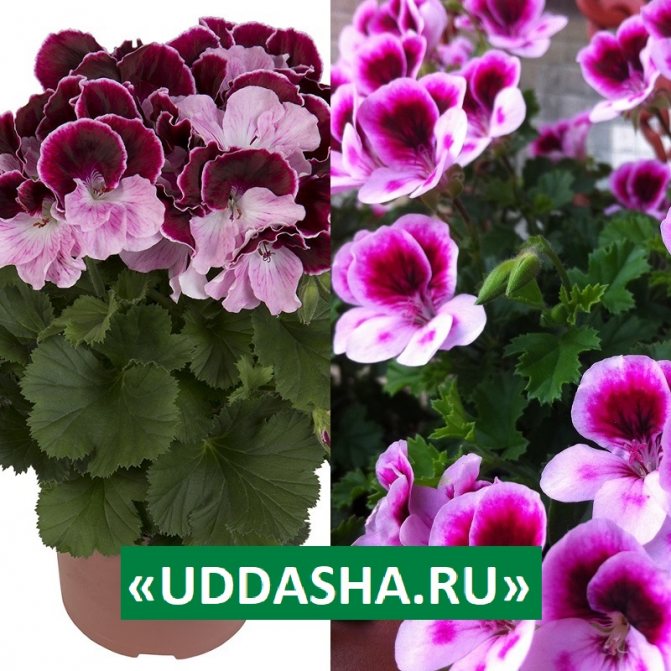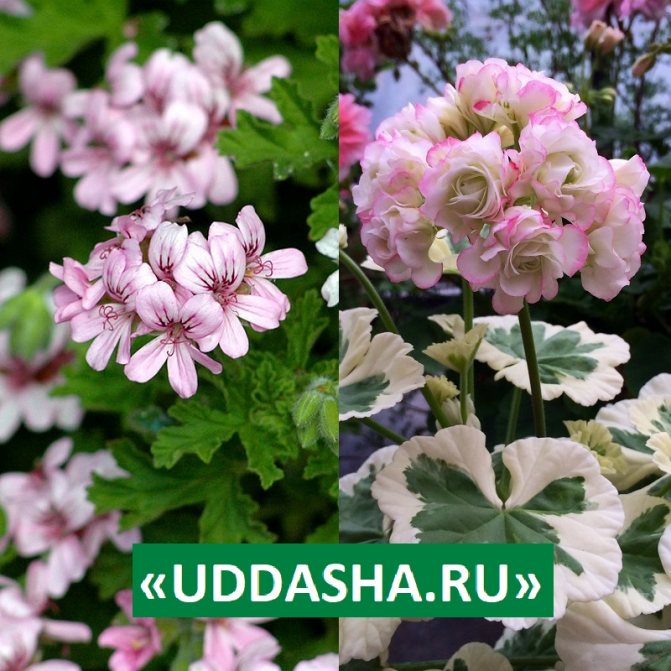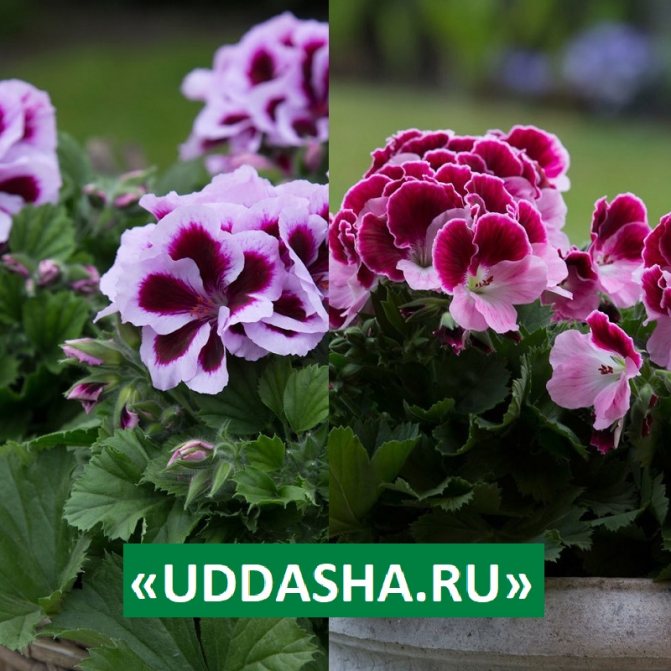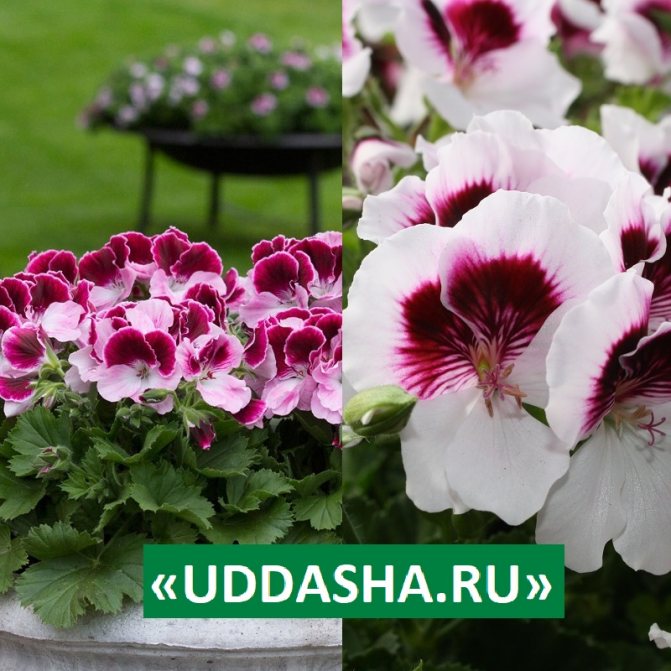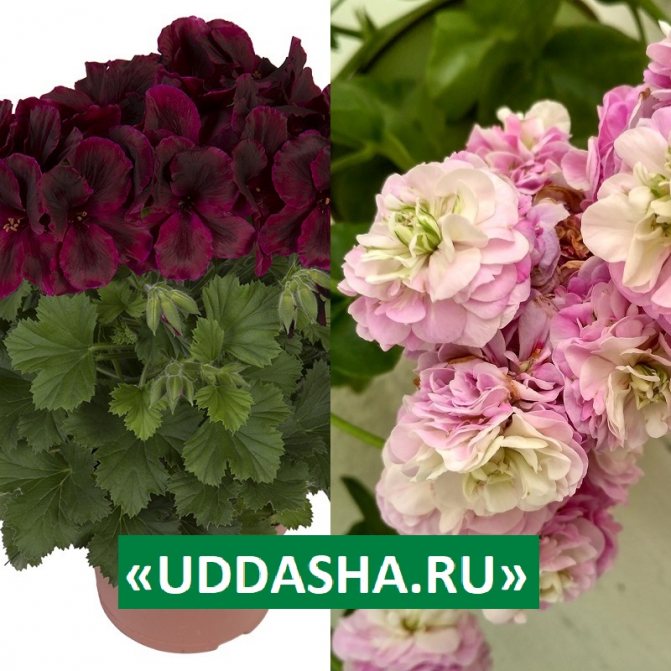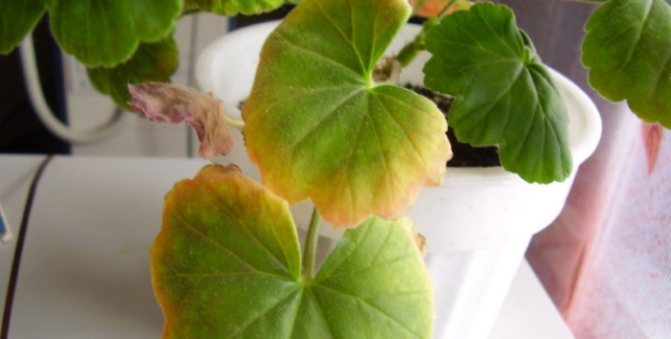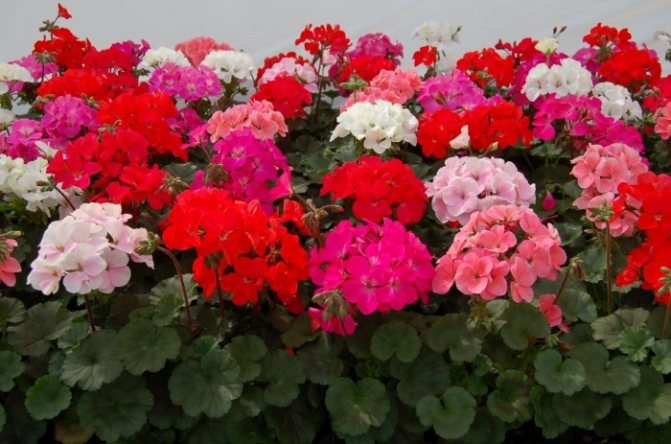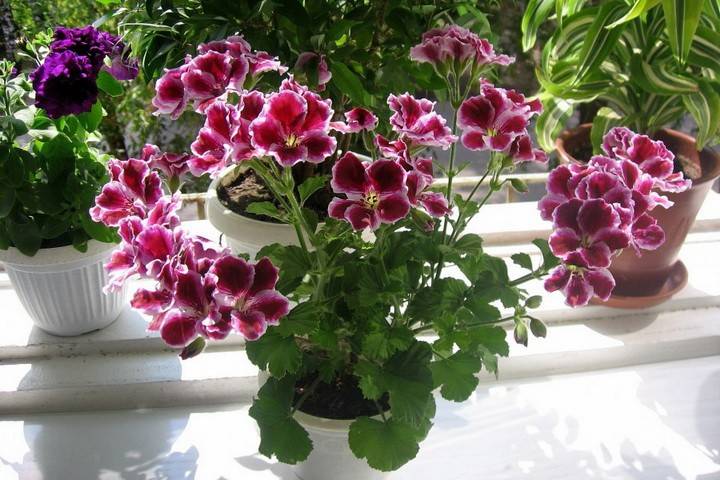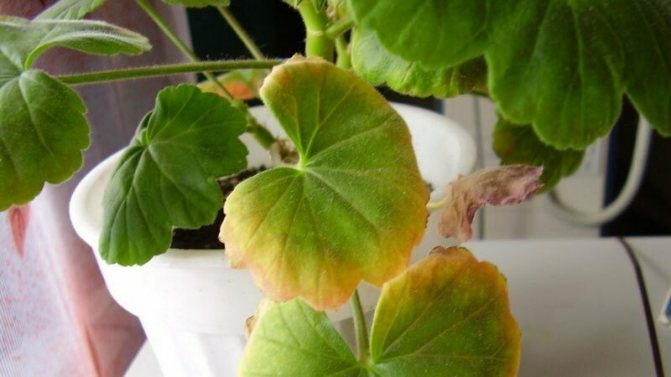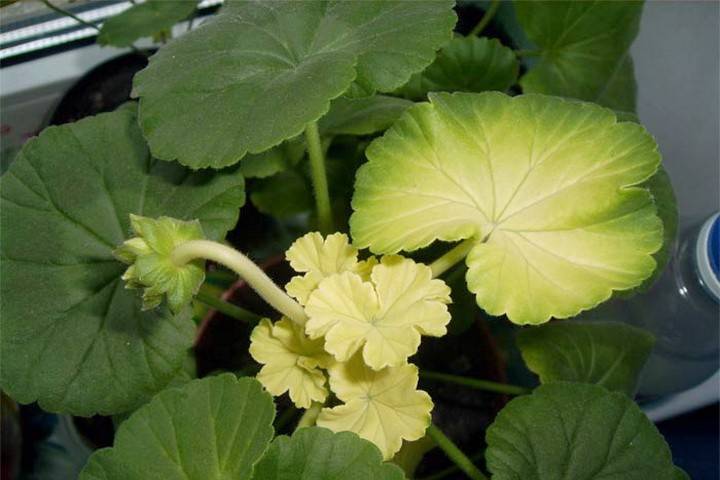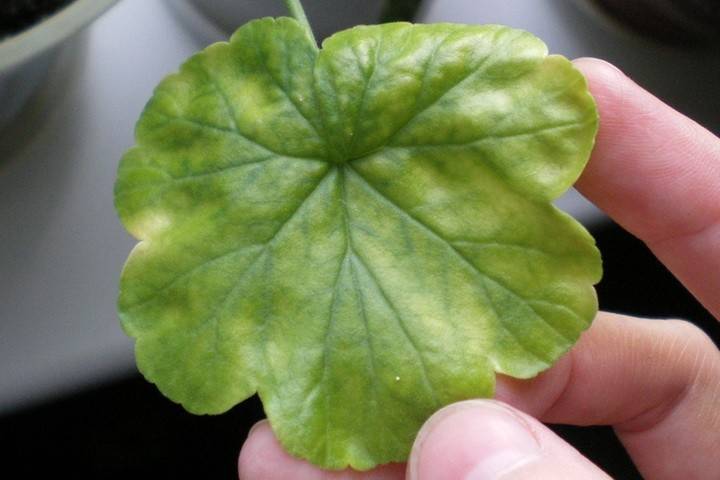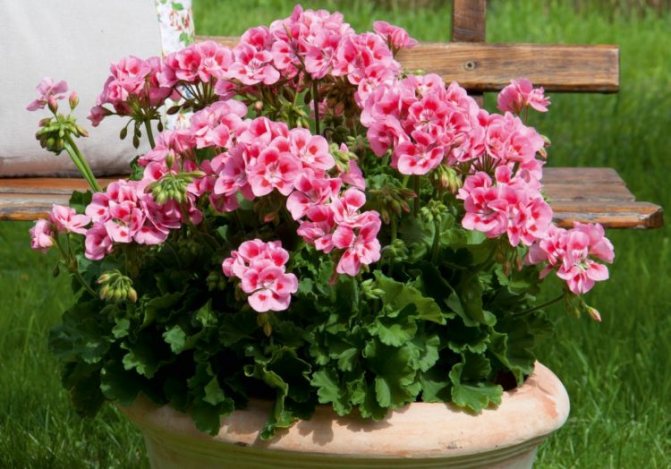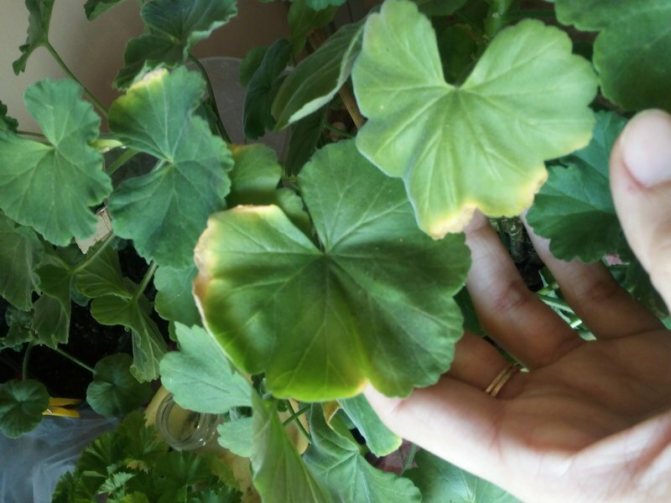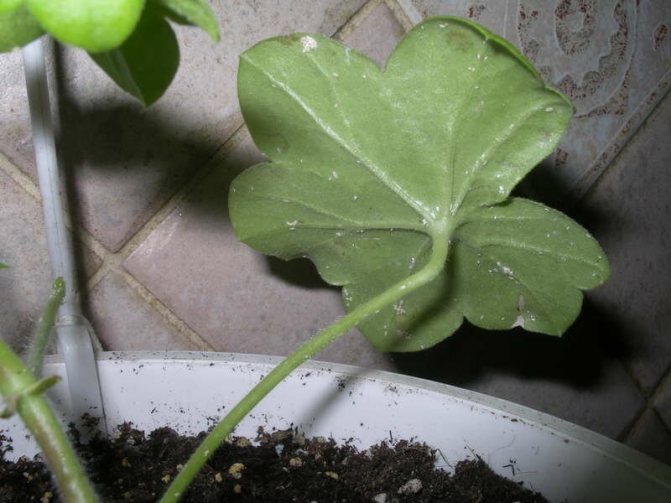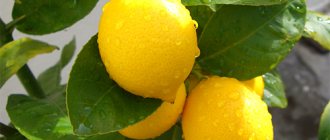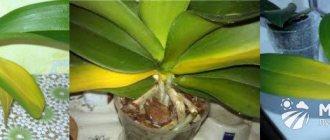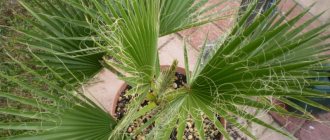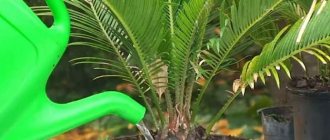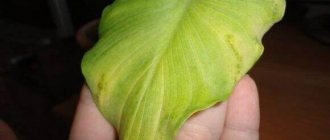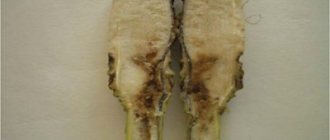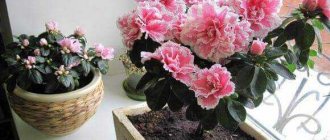Sometimes the leaves of indoor plants begin to turn yellow and dry. Illiterate care often becomes a provocateur. In this article, we will go over all the possible causes and tell you what to do. But first, a few words about the plant itself.
Pelargonium, which we grow at home (mistakenly calling it geranium), is a beautiful and unpretentious indoor plant to grow. It fits perfectly into the landscape design of the garden area, as it feels good in the street. It is a wonderful home decoration, a bright reminder of summer. Sometimes the foliage of the "geranium" turns yellow at the edges. Gradually, the greenery dries, falls off, the appearance deteriorates badly.
If you do not take care of the flowers in a timely manner, they will die. For this reason, it is necessary to study the standard mistakes when growing "geranium", so that it always pleases with its appearance.
How to determine if a plant needs feeding?
For the stable development of geraniums, as well as timely flowering, it is necessary to fertilize the soil. Depletion can occur 3 months after planting. In this case, the owner of the flower should remember that the plant cannot replenish its nutrition on its own. As a result, it is recommended to supplement with vitamins and mineral fertilizers.

Geranium withers
By frequency, groundbait is classified into:
- constant, which is introduced according to the established schedule, according to the periods of plant development;
- an urgent one is added as a result of the manifestation of negative factors.
Clear indicators of fertilizer shortages include:
- yellowing and falling foliage;
- slowdown in growth in spring and summer;
- lack of flowering during periods of activity.
Errors when caring for room geraniums
Illiterate care is the main reason for the appearance of yellow leaves in "geraniums". This is an unpretentious plant to grow, but the basic rules for its development must be observed. Knowing the typical mistakes, it is easier to understand what your favorite indoor flower needs.
Wrong capacity
The choice of a pot for pelargonium must be approached very deliberately. Some novice growers in vain believe that the roots need a lot of space. But this is not suitable for all plants.
Indoor geraniums in a cramped container will quickly fill the entire space with roots and plant growth will slow down. As a result, the leaves will begin to turn yellow and dry. Using a very large flowerpot is also not an option. In a spacious pot, pelargonium will begin to intensively build up the root system, giving all its strength to this process. For this reason, flowering will be delayed.
Over a large area, there is a risk of moisture stagnation, which will lead to the development of rot.
Lack or excess of lighting
Pelargonium is a light-loving flower. It is better to place it on a windowsill where there is enough light. In the shade, a yellow border forms on the leaves, they will begin to dry out. But the direct rays of the sun are also detrimental to pelargonium. Brown burns appear from them.
Too much watering
Indoor geranium is a drought-resistant species, this should be taken into account when leaving. It is enough to water once a week. During hot summers, the frequency of humidification can be increased. The plant does not tolerate excess moisture. A characteristic feature is the appearance of yellowness on the foliage.
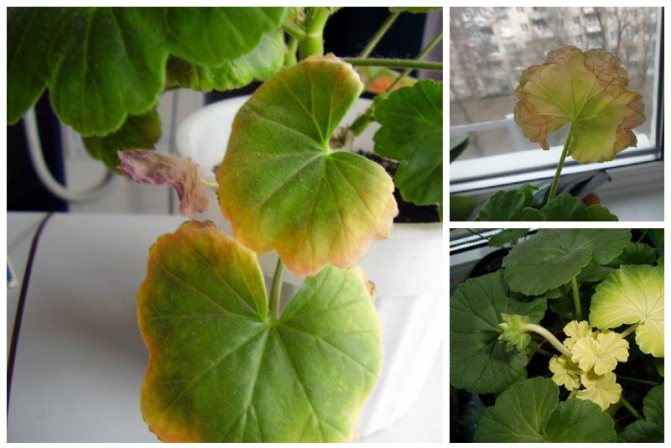

Lack of regular watering
Indoor geranium is capricious with regard to watering. It does not tolerate a lack of moisture, it is bad for waterlogging. You need to find a compromise: water the soil when it dries up to 2.5 cm. If this is difficult to track, then mulching the soil would be a good option. For this, pine bark, peat, crushed stone, tea, moss, marble chips are suitable. The time between waterings will increase, there will be no risk of spreading rot, and it will be possible to prevent yellowing of the leaves.
Incorrectly selected soil
In order for the roots of pelargonium to grow well, a special loose fertile soil mixture is needed. You can buy it at the store. The soil collected from the yard or forest may not be suitable for indoor geraniums, and will cause poor development and lack of flowering.
High air humidity
Not only the root system, but also the leaves are sensitive to excess water.
Do not spray on the plant from a spray bottle. This will negatively affect the color of the greenery, it may turn yellow.
Heat
Indoor geranium grows best at a temperature of +20 ° C. High degrees give yellowness on the leaves. This happens especially often in winter, when heating radiators strongly heat the air near the windowsill on which the plant stands. With a cold snap, the development of pelargonium slows down, flowering is delayed. She prepares for withering away.
Lack of fertilizer
Active growth and vigorous flowering require good feeding. This requires iron, phosphorus, potassium. It is necessary to add nutrients regularly once a month. You can buy a low nitrogen, all-purpose indoor flowering plant mix.
Ingress of herbicides
When the leaves turn yellow and dry, indoor geraniums are likely to be exposed to chemicals such as weed control drugs. Pelargonium is sensitive to household hygiene and cosmetics products - air fresheners, hair sprays.
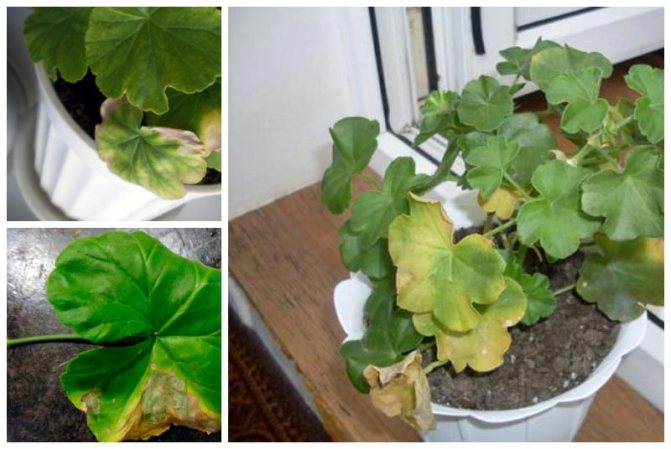

Drafts
Indoor geraniums are often placed on windowsills. Not surprisingly, this beautiful plant is always pleasing to the eye. But regular airing damages the appearance of pelargonium. The leaves begin to turn yellow and dry, gradually all fall off. You can fix the situation by choosing a place without wind.
Poor or no drainage
To drain excess moisture from the root system, there must be a drainage layer in the pot. In its absence, the process of decay begins, which gradually destroys the entire plant. Its beginning can be identified by the leaves. They start to turn yellow for no apparent reason.
What soil does a flower need
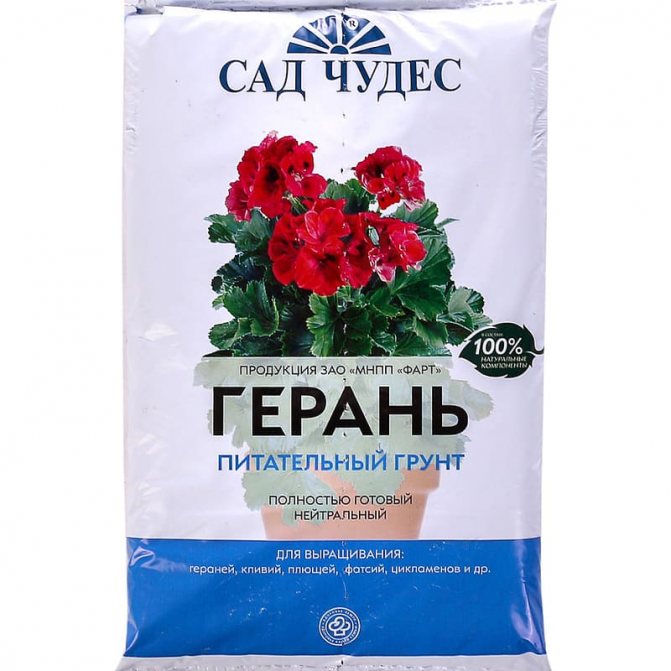

Geranium soil
Geranium can be classified as a type of plant that takes root in almost any soil. However, you should not rush and buy anything. The required soil must contain:
- universal mixture;
- vermiculite;
- fine sand;
- peat land:
- humus.
Important! For stable flower growth, it is necessary to use loose soil with drainage at the bottom of the pot.
Causes of the appearance of yellow leaves in geraniums
Why do the leaves turn yellow on a seemingly healthy geranium, which is carefully looked after? There are several reasons for this phenomenon, and almost every one can be eliminated by returning a healthy "green" appearance to the flower.
But, alas, root disease and the natural death of foliage cannot be cured. When the root is affected, the entire plant dies, and there is no cure for this, as well as for the aging of foliage.
Geranium leaves also turn yellow and dry due to improper plant care, lack or excess of certain trace elements, disease or pest damage. Let's take a closer look at each cause and ways to eliminate them.
Natural leaf dieback
Natural leaf death is the most common reason why geranium leaves turn yellow. This is especially noticeable in the zonal, the lower leaves of which regularly turn yellow, dry and fall off. Basically, you don't need to do anything.
However, since the plant loses its attractive appearance, it is recommended to partially prune the stem in the spring, which will speed up the appearance of new leaves.
Improper care is a common cause of yellow leaves in geraniums
The key to the health of room geraniums is proper care. And it begins with the choice of the pot and the "place of residence" of the plant. It is very important for her:
- Watering mode;
- Soil condition;
- Top dressing;
- "Winter holidays".
Any, even insignificant, violation almost immediately makes itself felt with yellowed leaves or the edges of the leaves turn yellow.
Geranium pot
Geranium does not like either tightness or space and immediately reports the wrong size of the pot with yellow leaves.
A clay pot with a diameter of 20-25 cm and a height of 12-15 cm will become a cozy "house" (in a plastic one the root system often rots due to excess moisture).
But be careful with the transplant. An abrupt change of "place of residence" usually ends with yellow leaves.
Change of habitat
Geranium is a "stay-at-home", and the slightest change in its usual conditions causes stress and violent protest in the form of yellowed leaves. Often geraniums are planted in open ground for the spring-autumn period, where it pleases with lush flowering. But returning the plant to the room ends up stressful, which goes away with the right, nurturing care.
No further action is required. And if you need to rearrange the flower to another place, then they do it slowly, moving it a couple of centimeters a day. In this case, yellow leaves will not appear.
Violation of watering conditions
The well-being of geraniums directly depends on proper watering, therefore, a lack of moisture, like an excess, leads to its deterioration. By the state of the leaves, it is easy to distinguish underfilling from overflow. The leaves wither and dry, which means there is not enough moisture. And if they turned yellow, then the flower was "flooded".
Therefore, it is important to water abundantly, regularly but infrequently, monitor the weather, and adjust the amount to water.
In the spring-autumn period, it is recommended to water it 2-3 times a week, and adjust the volume of water by the weather outside the window: if it is cool or rain, then reduce the volume, if it is hot, increase it. If the summer is hot and dry, then the flower is watered every other day in the evening. And in winter, the frequency and volume of watering is halved so that the plant can rest.
Quality of soil and water for irrigation
The health of the geranium also depends on the quality of the soil and water for irrigation. Good drainage will ensure the normal development of the plant's root system. And the soil can be purchased in the store or prepared by yourself.
Usually they buy a universal soil, add vermiculite, perlite and washed river sand. The main thing is that it should be loose, not form a dense lump.
Water for irrigation is needed soft, because in hard water there is an excess of calcium, which leads to yellowing of the upper leaves of the flower. Therefore, it is advisable to defend the water for irrigation, and you can additionally soften it by adding lemon juice or acid.
Sometimes yellow spots appear on the leaves of geraniums. It is a reaction to watering or spraying with cold water. The flower "loves" water at room temperature and has a negative attitude to the ingress of liquid on the leaves. Therefore, water it carefully, and you can spray it only in hot weather, but infrequently.
Air temperature
Geranium is a thermophilic plant that calmly survives drought, but from the slightest draft it can become covered with yellow leaves. The best temperature for the comfortable existence of a flower is considered to be room temperature - 20-25 °, and in winter - 10-14 °.
It is protected from drafts, cold or overdried air by home heating systems.
If the winter is warm, then geraniums will winter wonderfully on a glassed-in loggia or balcony with sufficient lighting.
Top dressing
Geraniums do not like frequent feeding.In winter, the plant is not fertilized at all, but potash-phosphorus fertilizers are used in spring and summer, since an excess of nitrogen causes yellowing of the leaves.
The lower and middle leaves suffer from a lack of:
Top leaves turn yellow and signal a deficiency:
Recommended reading:
Top dressing at different times
The frequency of fertilization depends on the season. In the autumn and winter period, the geranium bait is reduced or completely stopped.
With the onset of warm time in the spring, feeding with nutrients is resumed no more than 2 times a week. During flowering, the additive is enhanced. However, do not get carried away, an increase in the amount of fertilizer will lead to a disruption in the growth and development of the plant.
In the spring
After cutting off dry shoots, it is necessary to add substances with nitrogen. Every 2 weeks geranium should be fed with complex mineral and organic fertilizers.
Alternative methods are also suitable with improvised means, for example, water with iodine. Such a set will allow you to restore the strength of the flower after a dormant period.


Top dressing geraniums in spring
In summer
During the summer, the plant grows and blooms, while experts recommend feeding at least once every 12 days.
In autumn
Fertilization in the autumn is reduced to a minimum, as a result of the fact that geranium goes into dormancy. The frequency of feeding depends on the type of flower, no more than once every 1.5 months.
In winter
In the cold season, the flower goes into complete dormancy. At the same time, growth and development stops. Flowering stops completely. Growers stop constant feeding, but if stored in a warm place, it is necessary to add half the usual dose of minerals. In this regard, it is recommended to keep geraniums in a cool place.
How to feed blooming geraniums?


You can feed geraniums for abundant flowering both with the means purchased in the store, and with folk ones - by handymen. In the case of store-bought ones, these are special vitamin and other complexes with a high nitrogen content. But let's start with the popular, more budgetary, affordable and, according to many flower growers, more effective.
Feeding with manure and iodine
Only rotted manure is suitable for feeding! Fresh manure is a concentrate of active organic matter, which can burn the root system and thereby destroy any plant!
If the manure is sufficiently rotted, it is laid out around the stem of the plant and, subsequently, carried out by watering through it. A more effective way is to soak a small amount of manure in water and water with the resulting solution. You can also add some iodine to the water for irrigation.
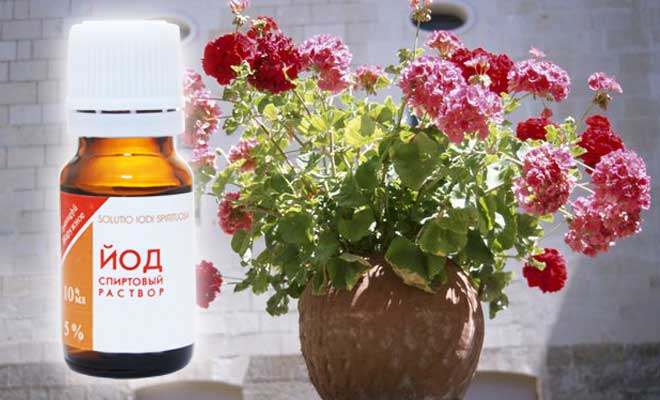

It is recommended to water your plant with iodine for amateur flower growers, whose pelargonium, for some reason, wakes from hibernation for a long time or does not develop as intensively as we would like. Iodine will greatly speed up the growing season and bud setting.
Nutrition with nitrogen and vitamins
But bait with manure is good if geranium grows in a flower bed. Within the premises, it will be better to feed the geraniums with something less "odorous", that is, use nitrogen fertilizers and vitamin supplements. But for this you should know a few rules:
- Nitrogen fertilizers are used to accelerate the growing season and for flowering, but only until the first buds begin to open. Subsequently, the use of nitrogen fertilizers should be abandoned.
- You will have to buy vitamins at a regular pharmacy. It can be dissolved in ordinary drinking water. But do not constantly water your plants with the same complex. The complex should be changed every fortnight.
- The more magnesium sulfate is present in the dressing, the more abundant the flowering will be.With insufficient development of the plant, the soil should be flavored with calcium (crushed eggshells can be insisted).
Why does the plant not bloom


Lack of inflorescences on geraniums
If during the period of activity the flowering of the plant stops, it is necessary to understand the reasons for this phenomenon and try to eliminate them in a timely manner. Common factors affecting the normal growth of geraniums include:
- Lack of nutrients necessary for growth of substances. Geranium has a positive attitude towards bait containing potassium.
- Care must be taken when wetting the soil. The plant can be damaged by frequent watering, experienced gardeners recommend adding water no more than 2 times a week.
- When planting a flower, a new container is selected according to size. When placed in a large pot, the geranium will begin to stretch out vigorously, and the flowering process will stop. If the required capacity is not available, then it is necessary to plant a couple of bushes in one, while the increased upward growth will stop. The forces are redistributed to flowering.
- Circumcision should be performed in the spring and fall. Active foliage growth will prevent the plant from multiplying through flowering. To prevent this phenomenon, gardeners cut the lower and upper lateral shoots of geraniums.
- Placing in a darkened place leads to the elongation of the stem. Pelargonium should be kept on windowsills, but avoid direct exposure to sunlight.
- Placing a plant in a dormant period in a warm place leads to disastrous consequences. It is recommended to store at a temperature not exceeding 16 ° С, and also to reduce the humidity level.
- Unsuitable soil composition leads to a deterioration in flowering. For pelargonium, it is recommended to use garden soil, fine sand and mullein humus.
- The onset of diseases. Visual inspection during watering will help prevent the death of geraniums from disease and pests.
Important! The plant must be transplanted at least once a year, and the old soil must be constantly renewed.
Mr. Dachnik informs: ambulance for geraniums and prevention
Indoor geraniums with yellowed leaves can be saved. Tips for Quick Pelargonium Relief:
- when transplanting, the roots are examined for rot, disease damage, if damaged, they are washed with a weak solution of potassium permanganate, completely change the soil;
- a flowerpot with a flower in autumn and winter is placed farther from the radiators, you can take it out to the glazed balcony (if the temperature does not drop below +12 ° C there);
- poured with soft water, it is defended for a long time and a pinch of citric acid or lemon juice (3-4 drops) is added;
- constantly inspect for damage by insects, fungi, take timely measures to get rid of;
- the soil is chosen in the store, it is a universal soil for indoor plants;
- when the ambient air is dry, they do not moisten pelargonium from a spray bottle; it is best to put a cup of water or wet expanded clay next to it;
- they are regularly fed, since the flower is sensitive to the lack of nutrients (choose complex fertilizers in the store);
- in order for pelargonium to bloom magnificently, pruning is done in the spring, leaving several shoots;
- if the plant is stretched to one side, the pot is turned towards the sunny side with different sides;
- before watering, the soil is loosened, the root system of pelargonium needs oxygen;
- in winter, they carefully look so that the leaves do not touch the cold glass, from this they dry out, turn yellow and fall prematurely;
- on a hot summer day on the sunny side, the window is shaded with a sheet of paper or a piece of gauze;
- if the window sill is cold in winter, to insulate the roots, put a kitchen stand under the hot wood, a towel, woolen cloth in several layers under the pot;
- if there is no drainage layer in the pot with geraniums, and the transplant will not be soon, then they regularly pierce the ground in several places with a red-hot knitting needle;
- in winter, cover the batteries with a damp thick towel, this will get rid of the increased temperature in the room and too dry air for pelargonium on the windowsill;
- A good container for indoor geraniums is a ceramic pot. Porous clay allows air to pass through, excess water evaporates faster, air enters the root system.
The beautiful green leaves of pelargonium indicate the health of the plant and proper care. Discoloration indicates disease, pests, or bugs.
Top dressing during flowering
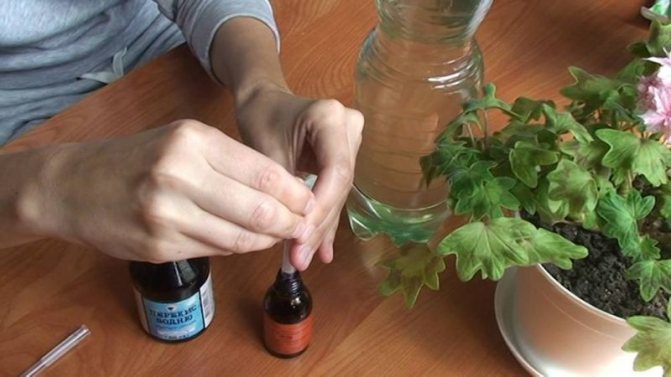

Top dressing geranium
To normalize plant growth, flower growers are advised to follow the following tips:
- liquid top dressing is poured after watering;
- the fertilized soil is loosened;
- it is forbidden to feed geraniums for 2 weeks before moving to another container, as well as a week after;
- flowers infected with pests and diseases do not feed.
Fertilization with vitamins
Vitamins of group B are used as fertilizer for geraniums. Thiamine (B1), pyridoxine (B6), cobalamin (B12) are suitable. They begin to be applied at the beginning of June, when the plant is in dire need of nitrogen.
The contents of the ampoule are dissolved in two liters of water and the flower is abundantly watered. Once every three weeks, the vitamin is replaced with another. Such feeding activates flowering and enhances protective functions.
BioGrow biofertilizer is an effective universal top dressing. It is widely known among experienced florists and has many positive reviews. The product allows you to protect plants from pests and diseases, accelerate development, make flowering more lush and saturated. More
you can read more about BioGrow HERE.


Popular home remedies
When caring for geraniums at home, any folk remedy can come to the aid of flower growers. Consider what bait can be used and with what dosage.
Camphor
This remedy is not a panacea, but it will help restore normal geranium growth. This growth promoter must be added in the amount of one teaspoon per liter of water. Then the container is closed and the contents are mixed by shaking. Watering is carried out at the root, or sprayed on foliage and young shoots.
Banana peel
The banana peel must be dried in the oven. Then the workpieces are crushed in a blender, add to a 1 liter container with water. Additionally, apply a tablespoon of egg shells, as well as magnesium sulfate. Insist for 3 hours, separate from the cake. Spray on foliage, the frequency of feeding is not more than 1 time in 2 weeks.
Iodine
A pure preparation is harmful to the root system of the plant. The florist needs to prepare an aqueous solution for 1 liter of liquid, add 5 mg of iodine concentrate, then mix the contents. It is recommended to pour the solution into the soil in the amount of 50 ml for one plant.
Iodine and peroxide
To enhance the growth and flowering of geraniums, hydrogen peroxide and iodine can be used. A drop of iodine, 2 ml of peroxide, is added to 1 liter of water. Watering is carried out along the outer contour of the root lump, while preventing the prepared solution from getting on the flowers and geranium sprouts. Up to 60 ml of liquid is poured into 1 pot, no more than 1 time in 3 weeks.
Egg white
The protein of a chicken egg is poured into a glass of water, separating it from the yolk. We fill the container to the brim with heated water and leave for a week in a dark place. The concentrate is poured into a container with 2 liters of water and mixed. Watering is carried out no more than once every 2 weeks.
Yeast
Ordinary yeast can be used as a growth promoter. Up to 120 grams of the substance is poured per liter of water. Watering must be carried out within a few minutes after preparing the solution.
Attention! If there has been an overdose of mineral fertilizers, it is not recommended to use a yeast solution, as it will provoke harmful reactions.
Dairy products
Up to 150 ml of milk is poured into a liter container with water.After mixing the liquid, you can use it for watering. This solution helps restore the plant's calcium balance for normal growth.
Tea
The used welding is mixed with ash from wood, while the ratio is maintained at 1: 1. The mixture is poured onto the ground and mixed with it, removing the concentrate from the surface. As a result of the fertilization procedure, the flower is saturated with nutrients. Tea can be added to the soil when transplanting geraniums.
Aquarium water
Water from domestic fish can be used as an activator for active flowering of the plant. It has been proven empirically that this folk remedy helps to restore pelargonium after a period of rest.
Onion peel
Onion skins contain useful substances such as carotene, phytoncides and a complex of vitamins. In a mean, these substances reliably protect the plant from pests and diseases. 1.5 liters of water are poured into an enamelled container with water and a handful of dry onion skins are poured. Boil for up to 7 minutes and let the infusion cool. Spray on foliage and roots, as well as conduct direct watering of geraniums.
Orange peel
Citrus peels contain a substance called limonene. It can destroy the protective shells of many insect pests, destroying them in colonies. Pour the crushed crusts with hot water and let it brew for a while. Then watering is carried out under the root and foliage.
Sugar water
Geranium is considered a sugar-loving plant. To make the syrup, you need to add up to 3 tablespoons of sugar to 1 liter of water and stir to water the root system. Thus, the flower is fed with organic fertilizers.
Diseases and pests
If, with good proper care, geranium leaves still turn yellow, then diseases of indoor plants may be the cause.
Gray rot
Causative agent: Botrytis cinerea (gray botrytis). Lives in the ground from one to two years. It spreads downwind, with land, water, and other infected plants.


The reasons:
- stagnant moisture:
- high air humidity;
- excessive spraying;
- a large amount of nitrogen in the soil;
- poor ventilation.
The disease is characterized by damage to the foliage. On it, areas with a velvety bloom, brown spots are formed. The disease affects the lower leaves the most.
Ambulance: fungicide treatment (Fundazol, Vitaros).
Rhizoctonic rot
Causative agent: Rhizoctonia solani. Infection occurs through the soil.


The reasons:
- excessive amount of dressings;
- exceeding the permissible temperature of the content;
- excess moisture;
- lack of light;
- poor ventilation;
- a difference of 6 ... 8 ° C between the temperature of the soil and the ambient air.
The disease affects the roots and stems of the plant, depressed spots appear on the stem. The fungus begins to spread along them (to a height of no more than 25 cm).
Ambulance: cessation of watering and treatment with fungicides (Fundazol, Vitaros, Rovral).
Alternaria
Causative agent: Alternaria alternata. Infection occurs through the soil, especially under greenhouse conditions (warm and humid).


The reason is high humidity.
Yellow and brown spots with a light center appear on the leaves. With high humidity, they are covered with dark velvet. Most often, the disease affects zonal pelargonium.
Ambulance: fungicide treatment (Skor, Ridomil Gold, Rovral).
Verticillary wilting
Pathogens: Verticillium dahliae and albo-atrum. Lives in the ground up to 15 years. Infection occurs through damaged roots, during rooting of cuttings.


The disease is especially active in summer, with warm weather and rapid drying of the soil.
It begins with yellowing of the lower leaves. In the future, the disease covers the entire plant. In a severe case, you have to throw the pelargonium along with the earth.
Ambulance: maintaining the correct soil moisture and treating with fungicides (Fundazol, Vitaros, Rovral).
Rust
Causative agent: Puccinia pelargonii-zonalis. It is transmitted through other affected plants through water and air.


The onset of the disease can be determined by the brown dots on the stem. Then the leaves begin to turn yellow. Gradually they all fall off.
Ambulance: reducing air humidity, stopping spraying, getting rid of diseased leaves, treating with fungicides (Topaz).
If the room geranium turns yellow, you need to examine the plant, it may have been attacked by parasites. They rarely infect pelargonium, since a strong specific smell scares them off.
Pelargonium is usually annoyed by the whitefly. She lives and lays the larvae under the flower. If the pest colony grows to a large size, then the leaves turn yellow or turn brown. You can see the whitefly with the naked eye. It is up to 3 mm in size with white wings.


When geranium leaves begin to turn yellow and curl inward, this is an invasion of aphids. Getting rid of it is difficult, but real. To do this, remove all the affected parts of the plant, and then carry out the treatment with Fitoverm or Mospilan.


We recommend reading the article on why the leaves of room geraniums can curl and dry and what to do about it.
FAQ
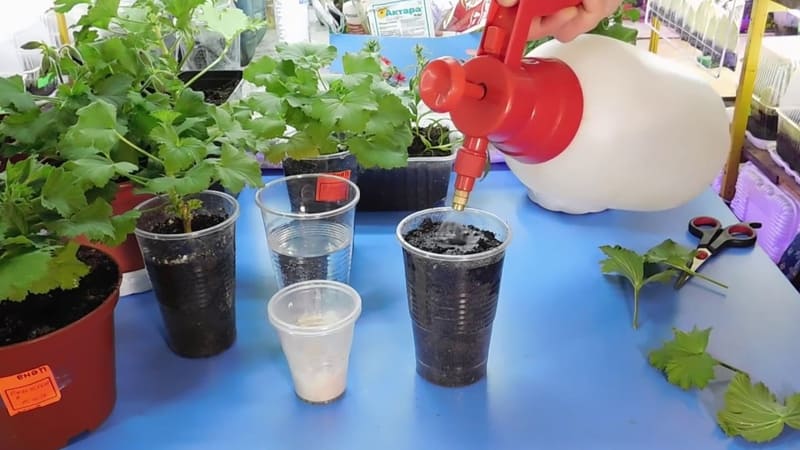

Geranium care
Newbie florists may often have the following questions:
- Soil composition... The soil should consist of small stones at the bottom, peat soil, rotted mullein, fine river sand, and it is also allowed to use a ready-made mixture from outlets.
- Signs of the need for groundbait. These include: yellow foliage, slowing or cessation of growth, lack of flowering during periods of activity.
- What to use in pest control. In this case, an infusion of orange peel and onion peel will help.
As a result of proper home care, even beginner growers will be able to preserve the plant, as well as enhance its growth and flowering during the period of activity.
Characteristics and care
This plant has several dozen species, which differ from each other in the size of leaves and flowers, and in smell. Despite such a variety, all varieties are distinguished by bright, long flowering (read about why pelargonium does not bloom at home and what needs to be done here). It is often mistakenly called geranium, but these two flowers have fundamental differences. The difference between pelargonium and geranium lies in the intolerance of the first cold weather and the inability to give blue shades during flowering.
In fact, pelargonium is a geranium variety bred for home keeping. There are four main varieties:
- Royal (distinguished by large, delightful flowers).
- Fragrant (during flowering it spreads the smell of mint, wormwood, pine, lemon).
- Zonal (have terry, star-shaped sheets).
- Ampelny (leaves are very unusual, five-lobed, smooth)
For comfortable growth at home, pelargonium needs an abundance of air and sun, regular but moderate watering. In the summer, the soil is fertilized - saturated with nitrogen, phosphorus and potassium (we talked about how to feed pelargonium for abundant flowering here). For better flowering, the top is pruned (read here how to form a beautiful crown for pelargonium). But, even under comfortable conditions, the plant can get sick. Yellowed leaves are the most common problem. Why is this happening? Let's consider the reasons.
IMPORTANT! Although pelargonium loves light, direct sunlight is contraindicated for it.
Prophylaxis


A few tips to prevent yellowing in foliage geraniums:
- It is important to keep the plant size and pot size consistent. As soon as the geranium pot "outgrows", it is recommended to replant the plant.
- It is also important to provide a suitable place for the plant with sufficient lighting (diffuse) and no drafts.
- Watering should be done regularly, but only if the top layer of the soil is dry.
- It is important to feed the decorative flower with appropriate fertilizers in time.
- In winter, keep the plant in a cool room.
- You should regularly inspect the flower for the detection of pests, the initial stage of diseases. And if there are alarming symptoms, take appropriate action immediately.
Lighting and temperature control
- Pelargonium comes from South Africa. It is suitable for a hot climate, where the temperature is stable, approximately 20-30 ° C. Cold is a mortal enemy for these plants. The temperature should not be lower than 10 ° C, and the frost kills them quickly. In indoor conditions, the plant feels good.
- Geraniums should be grown in very bright areas or in direct sunlight. It is recommended to expose geraniums to 4-6 hours of sunbathing. If they are grown in greenhouses, they must have intense lighting in order to promote the appearance of flowers. Light is a very important factor in the flowering of these plants.
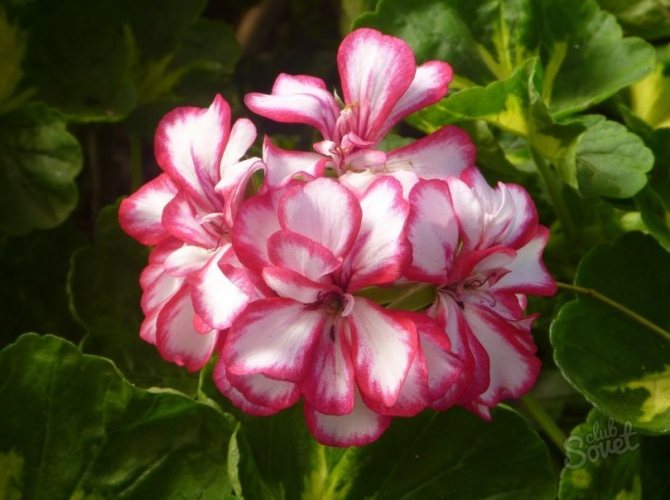

Provide the right conditions for the geranium and it will not have problems with leaves. And her flowers will delight you!
Excessive irrigation
- Irrigation is very important for the cultivated plants. We often think that the more water we give them, the better it will be. But the reality is not always like that. Whether we water a little or a lot, geraniums will have problems. If over-watered, the lower leaves will begin to turn yellow and eventually fall off. The plant will look sad.
- What to do? It is most advisable to remove the plant from the pot, wrap the root ball in absorbent paper and leave it out of direct sunlight until the soil is completely dry. Then, transfer it to a container and spray it with a fungicide to prevent fungus growth.
- In winter, geraniums are kept fairly dry and are watered only occasionally.


Photo
In the photo you can see geraniums with yellow leaves:
Methods for treating yellowing leaves with folk methods
To remove the problem of yellow leaves, it is important to understand the reason:
- Perhaps the root system has outgrown the volume of the pot. This can be determined by turning the pot over: roots are peeping out of the drainage holes - it's time to transplant the flower.
- Possibility of infrequent or over-watering. If the soil does not dry out for seven days, then the roots do not receive the required amount of oxygen with an excess of moisture. The development of mold, putrefactive processes is possible. When deciding how to feed geraniums so that the leaves do not turn yellow in this case, it is better to turn to peroxide. It not only removes bacteria, but also oxygenates the roots.
- The lack of nutrients after prolonged flowering can also affect the color of the leaves. In this case, it is advised to use a liquid infusion of mullein or bird droppings. If that doesn't work, then a store-bought organic fertilizer will do.
Yellowing followed by shrinking leaves
Such symptoms, as a rule, appear on adults, there may be several reasons for this:
- lack of nitrogen;
- lack of humidity in the room;
- high air temperature in the room.
In order to prevent fading, it is recommended to carry out systematic pinching, that is, to remove young shoots so that those that appeared earlier can fully develop. The growth of pelargonium, followed by shrinking, is a signal that seating is needed.
Subcontract poorly nourishing plant
- Pelargonium needs a loose and fertilized soil. It must be transplanted into a new substrate every two years, otherwise, the roots will run out of nutrient and the plant will begin to weaken. If the leaves on plants (not only geraniums) gradually turn yellow, this is often a signal of nutritional deficiencies, especially if the leaf veins themselves remain green.
- What to do? In addition to replanting it every two years, it is very important to feed the plant from spring to autumn with fertilizer for flowering plants, following the directions on the package.
- Yellow leaves on geraniums often indicate a deficiency in the trace element iron.
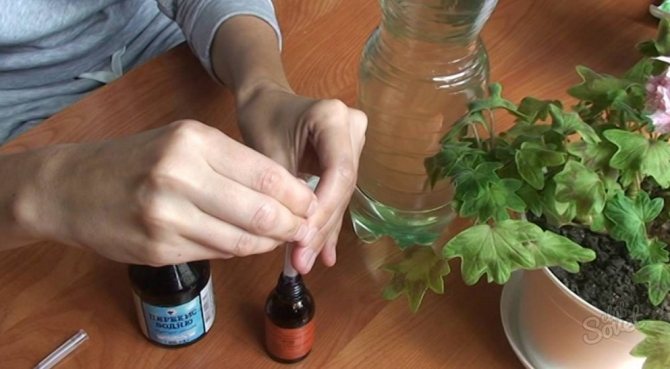

Features of the growth of a flower in an apartment
As already noted, indoor geranium does not cause much trouble to the owner. She is undemanding and needs minimal maintenance. but there are factors that should not be overlooked:
- there should be a lot of space in the pot;
- the soil should be chosen permeable, for good air exchange;
- a lot of sunlight;
- high-quality, timely watering.
It is important that the soil mixture meets the following standards: it has a good drainage layer, is moderately loose, rich in mineral components, and has a neutral pH.
The following components, taken in equal proportions, are considered the optimal composition for geranium.:
- coarsely fractional river sand;
- peat;
- humus;
- sod land.
Important! Alkaline soil is not suitable for geraniums.
Pot too small
- As a rule, too large a pot is not needed for geraniums. When the geranium grows, its leaves turn yellow because there is too little space for it. If you transplant the plant into a larger pot, the problem will be eliminated.
- Planting tanks for pelargonium should have a drainage hole and good drainage, because "wet feet" generally do not like sun worshipers.
- Geranium is ideal for pots or large window frames (20 x 100 centimeters). You can place about five plants in them. For good fertilization and water supply, the box should be at least 18 centimeters.


Root problems and damage
Roots are the main part of any plant. They need to be protected and not to allow wounds and cuts. Because this can lead to the death of the geranium.


Geranium roots
The first symptom that your pelargonium has root problems will be yellowing of the leaf blades.
If the roots are damaged, then they need to be treated with potassium permanganate, and then sprinkled with wood ash or crushed activated carbon.
IMPORTANT!
An unsuitable pot can also cause root problems.
In a pot that is too large, geranium roots will not be able to absorb moisture quickly and will begin to rot. And in a small pot it will become cramped for them.
Phyto control measures
Disease is easier to prevent than to cure - this principle of prevention is also true for plants. And her main rule is hygiene. A plant clean from ailments and parasites and clean soil will be the key to the health of pelargonium. A flower can pick up an infection or a parasite anywhere: in a nursery, in a store, in the soil. To protect green pets, introduce home phytosanitary controls. These measures will ensure plant safety.
- Make sure the new plant is not infected with disease or parasites. Before bringing it home, inspect the stems and leaves, and if possible, the roots. If there are spots, dots, other damage or symptoms of disease, you need to be on your guard. Check geraniums for pests. An innocent white speck may be a mealybug. In case of severe damage, it is better to abandon the plant, it can infect others. And such an acquisition will bring more trouble than pleasure.
- The new plant, at first glance, is perfectly healthy. Do not rest easy on this and do not rush to put it to the rest of the green pets. Health problems may appear later. Fungal and viral diseases have an incubation period during which symptoms do not appear. And pests, the adults of which are destroyed, can leave the larvae. Keep the new flower isolated for at least two weeks, and preferably at least a month. Only after quarantine, introduce him to the rest of the neighbors on the windowsill.
- Be careful when replanting pelargonium.She doesn't like this procedure anyway. In addition, most bacteria, fungi and parasites spread through the soil. And store-bought soil is no exception. It may contain not only useful components, but also fungal spores. Before planting, be sure to disinfect the substrate and drainage by calcining, and pour boiling water over the pot. You can also water the new soil with a solution of some fungicide.
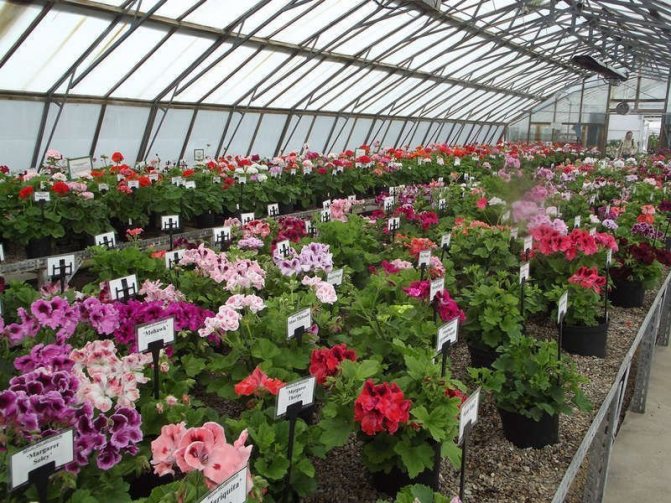

An infection or pest can enter the house from the greenhouse, so quarantine new plants
Video: Inspection of New Plants and Preventive Treatment
The main causes of yellowing
Yellow leaves spoil the appearance of the culture, but in addition, they can be a sign of a dangerous disease, pests. So if you do not take retaliatory measures in time, the plant may even die. So why do geranium leaves turn yellow? There may be several reasons.
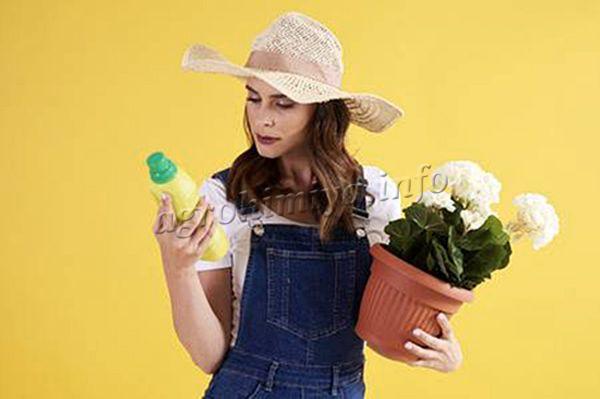

Indoor flowers need fertilizer no less than garden crops
- Improper care;
- Disease;
- Pest;
- Incorrect flower container;
- Bad soil.
As you can see, there are a lot of yellowing options. But if the cause of the yellowing is determined in time, the problem can be eliminated. Then the leaves will start up new, young foliage, which will no longer turn yellow.
Important!
Nutrition is important for any plant. Indoor flowers need fertilization no less than garden crops. If not fertilized, they turn yellow and dry over time.
Features of feeding geraniums
- When feeding, it is important to observe the dosage. If too much nutrients are added, the leaves will turn yellow and wither.
- Nitrogen fertilizers for geraniums help it recover. They are brought in after pruning.
- Feeding geraniums for abundant flowering does not require special costs. The main thing is to water the geranium with iodine dissolved in water, add a complex of minerals, observing the dosage.
You may be interested in: What fertilizers to apply in the fall: feeding options
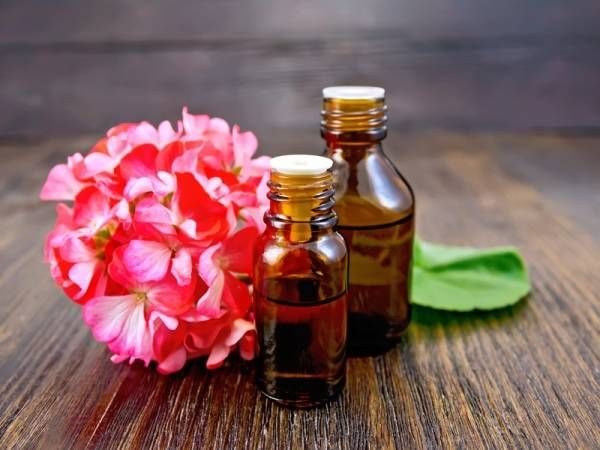

What if the edges of the leaves turn yellow?
If the edges of the leaves of your crane began to turn yellow and dry, then there are two explanations for this.
- The flower dries up.
- Roots are damaged.
In this case, you need to check the potting soil first. If it is completely dry and cracked, water the plant and move it to a shady area.
If everything is fine with the soil, then your geranium has a damaged root system. To save a plant, it must be transplanted. In this case, the roots will have to be treated with a solution of potassium permanganate and sprinkled with crushed activated carbon.
Yellowing and blackening
This is evidence of improper care for pelargonium. Yellow dry spots, in the absence of adjusting the rules of care, turn into slippery dark areas, on which mealybugs subsequently appear. A crane that is exposed to a similar infection throws off its leaves.
Measures to combat such phenomena are considered to be treatment with strong chemical agents, it is advised to place pelargonium in quarantine conditions, and to remove neighboring flower pots at a safe distance.
Home care
Although geranium is quite unpretentious, however, caring for it is still necessary. With proper care, the plant will avoid yellowing of the foliage, will not hurt, and will delight you with more lush flowering. What features of care must be borne in mind so that the leaves of the flower do not turn yellow?
High-quality lighting is especially important. The plant does not tolerate dark places, shaded areas.
But, to avoid yellowing, it is important to cover the flower from direct sunlightthat can burn delicate foliage.
It is also necessary to monitor the humidity of the air in the apartment: leaves can turn yellow both from dry air and from excessively humid air. Optimum is 50-60%.
It must be remembered that this plant does not like spraying, and absolutely does not need this procedure. But since dry air is unacceptable, it is necessary to humidify the space around the pot, not the flower itself.

